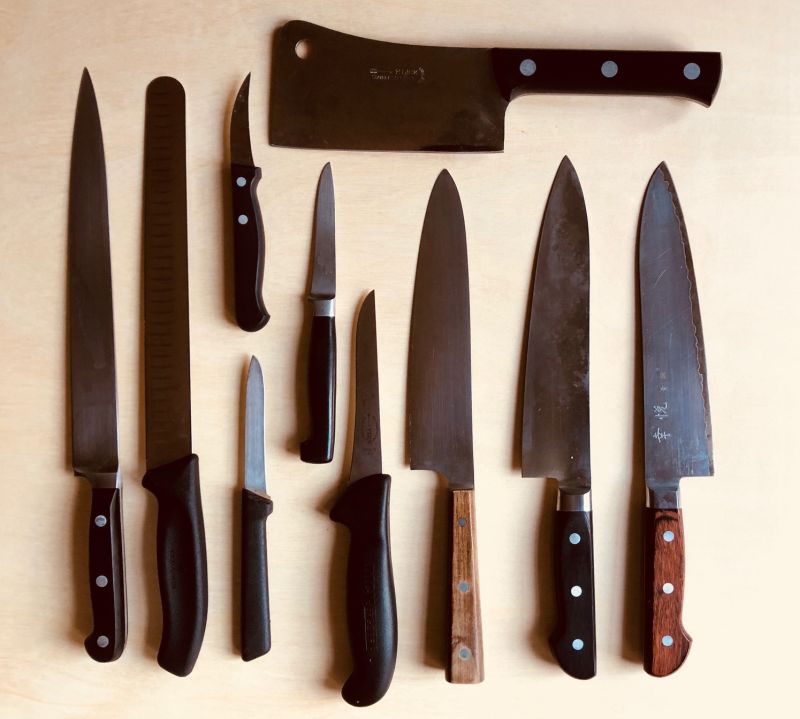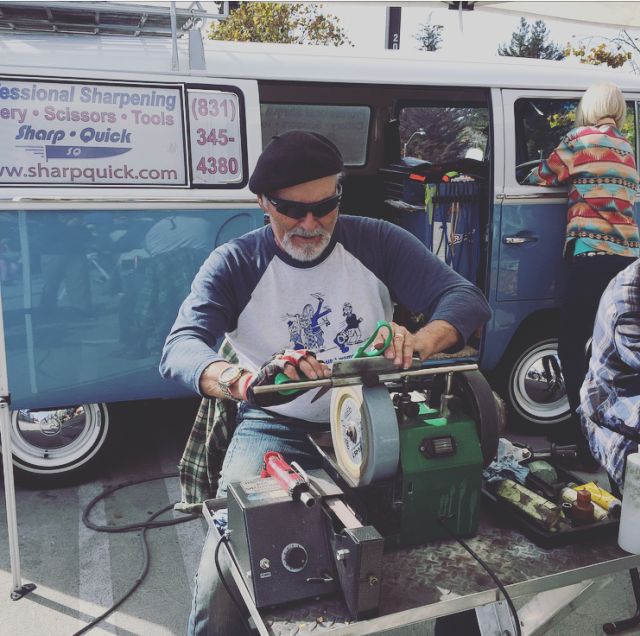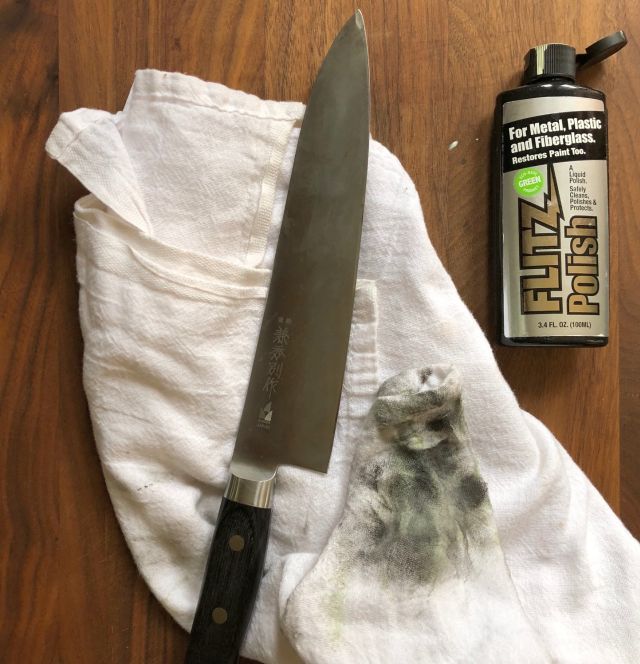
Folks, working with a new blogging system is confusing. I made a mistake with part of this post. For a Japanese knife buying guide, see my 2017 Gift Guide for Curious and Obsessive Cooks. For this post, I'm focusing on how I keep my all of my knives in ship-sharp shape. Read on!
Since I'd invested time and resources in the Japanese knives I dove into keeping them sharp. At first, I purchased a ceramic steel (the one I got is no longer sold on Amazon but this one is very similar), which is suppose to be finer than metal ones. It worked well enough on all my knives -- you see their breadth above. In total, my knife collection is a combination of stainless steel and all the other kinds of steel I mention in the Gift Guide. To refresh knife on the steel: I lightly swipe the blade along the steel: 3 swipes on each side followed by 2 swipes on each side and finished with 1 swipe on each side.
The steel was like a temporary route to sharpness. I wanted a sharpening method that would last a little longer, but didn't want to get into the nitty gritty of whetstones and sharpening angles. As Clint Eastwood says in Magnum Force, "A man's got to know his limitations." I know mine.
That's how I ended up with a stropping kit (below). No, it’s not like I’m opening a barber shop. The strop kit below is from ChefKnivesToGo.com, which has a great how-to video on its site, too.

I used it maybe once every other month – but I have a lot of knives in my kitchen. The syringe contains a super fine diamond paste that you smear on the balsa wood for the initial sharpening. Then you finish each blade on the strip of cow hide. Both the wood and leather magnetically stick to the black metal piece on the left. In between stropping sessions, I use the steel to very quickly and easily refresh the blade.
With the stropping kit, all of my knives stay sharp and I barely use the steel anymore. If you want to spend less than I did, this sharpening kit looks very promising; it comes with a how-to e-book.
The unintended consequence of buying these super sharp Japanese knives is not going to get my knives sharpened on a quarterly basis from my knife guy, Terry Beech of Sharp Quick. He’s a former high school science teacher who in retirement has become a master knife sharpener. He operates from a renovated VW van and powers his equipment with solar panel energy.
Terry started his business around 2004 and I've supported him ever since. He's taught me a lot. Over the years, he's sharpened over 60,000 knives and various blades (scissors, axes, pruning shears, etc.).
Nowadays, I take my Japanese knives to him for an annual tune-up. I have regular stainless steel knives (paring, boning, cleavers, slicing and bread knives) that require his attention more often.

Mobile knife sharpening services are popping up in many parts of the country. As a former teacher (he taught people at the Department of Defense during the Vietnam War, too), he periodically trains people to be professional knife sharpeners. Look for services like his near you.
When I told Terry about one the semi-stainless blade getting spotty, he gave me this tip: If there’s any spotting or staining on the blades, use Flitz (sold at hardware stores), a soft cloth, and a little elbow grease.

Soon after using a knife, I wash it. If it's a stainless steel one, I'll let it air dry. Otherwise, I wipe the knife dry with a dishtowel (the linen ones I'm currently into efficiently does the job). No matter how much the knife cost, I never put it in a dishwasher.
Find a knife sharpening and maintenance system that works for you. I owned Chef's Choice diamond electric sharpeners back in the 1980s and 1990s but they never quite did the job. Going unplugged works better for the knives that I own today. Making friends with a knife guru like Terry, helped a lot too!
















